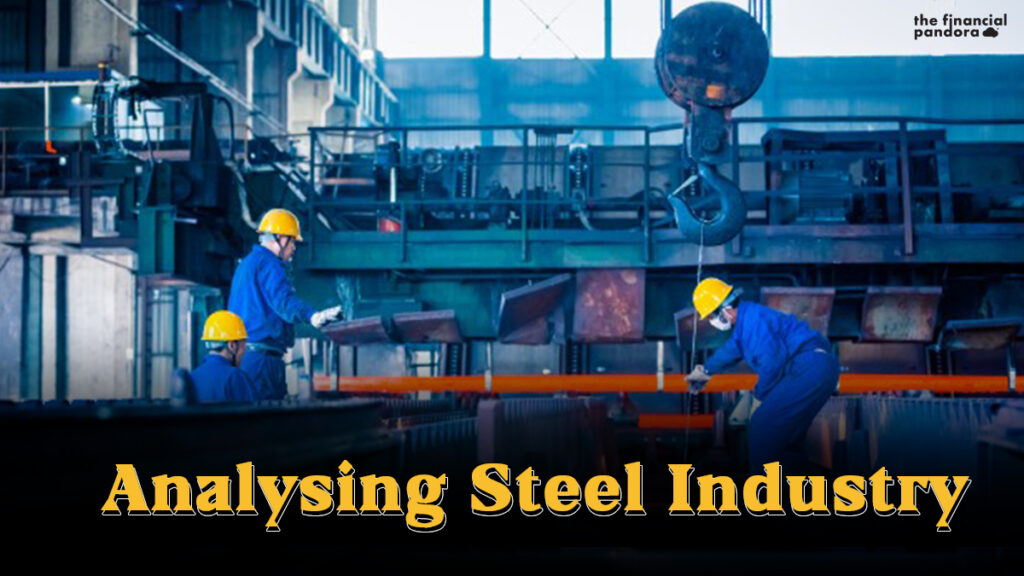Production of steel began in the year 1850. Back in those days, steel was considered a royal raw material, it’s usage being limited to war essentials – sword, armor and knife. 5 years later, Mr. Henry Bessemer, with the invention of the Bessemer process, laid the foundation for mass production of cheap steel across the globe.
What exactly is steel?
Steel is a metal, more specifically an alloy of iron and carbon. It is durable and recyclable. Presently, it is used in the making of skyscrapers, automobiles, elevators, surgical equipments – we could say practically everything! With the world running with steel as it’s base, there is a lot of importance placed on ensuring the constant development of this industry.
What's with the soaring steel prices?
Did you know, that steel prices are currently at an all-time high?
There is a shortage of iron ore in the world. About 98% of the world iron ore production is used to make iron in the form of steel. Hence, there is also a steel production shortage in the world.
But, why is iron ore production low?
The problem in India was initially reported in the Financial Express on the 30th of November, 2020. A good number of mines that changed hands through auctions in February, 2020 had not started production in Odhisha by November end. The auction rules had undergone a change, and as a result, a lot of open category bids had gone to the captive users of iron ore. Captive mines are those that produce minerals for the exclusive use of the company that owns the mines. Some clearances were pending for the captive users and hence the production was affected in Odhisha.
Globally, Australia and Brazil and the world’s largest iron ore producers. The global iron ore shortage is primarily due to a Brazilian mining firm’s slow recovery from a fatal dam accident in the year 2019. The pandemic and climatic concerns have added to the trouble.
On the one hand, the raw material supplies are scarce, and on the other, China’s demand for the ore is continuously increasing.
What is China doing with so much iron ore?
With insignificant number of Covid-19 cases in China, it is back at strengthening its economy. China is targeting more than 1 billion of steel production units this year, a growth of 30% over the last five years. The top-most steel making city in China is Tangshan. Chinese authorities are planning on imposing restrictions on steel production for environmental reasons. It has already imposed production curbs in Tangshan, China’s top steal making city. The other parts of the country, as a result, are boosting production, fearing further restrictions in China.
Australia and Brazil together are also not able to satisfy China’s thirst of iron ore. China, as a result, has hence been excessively importing from India, increasing the imports from India by 88%. China, the world’s largest steel producer, imported 44.8 million tonnes of Iron ore from India in 2020, as against 23.8 million tonnes in 2019.

Will steel prices ever come down?
SAIL’s stock price has risen by 50% in one month. An Equirus analyst has advised Long coverage with a March 22 target price of Rs.162. Tata Steel and JSW Steel are trading at lifetime highs. It is expected that the demand will exceed the production numbers even during the current financial year. Steel prices may take at least 2 years to cool down. The GOI has announced stimulus packages to survive the financial crisis. Due to this, consumption has increased and steel demand is constantly rising. The steel prices might not come down till the benefits of the packages are fully utilized.
There are several other challenges being faced by the steel industry. Whilst it is a necessity to sustain life, the production is not only dangerous and hazardous for the workers, but also environmentally not- friendly. Many curbs are being placed around the world to limit the production. Due to this supply gap, there is a possibility that the prices keep increasing in the long term, until someone comes up with a simpler, non-polluting way of manufacturing steel.
Presently, India is a net importer of iron ore as domestic supply is not enough to meet it’s demand. The Supreme Court has put caps on the mining/ production of iron in the state of Odhisha, Goa and Karnataka. Lack of enough efficient captive mines in the country has inflated the problem. Iron ore prices in the globe have surged to 10 year highs.
What is needed is the revamp of the production in India. As per an article published by Business – Standard, if it is possible to continue the steel production growth, prices will likely decline in 2-3 months.
Follow Us @




